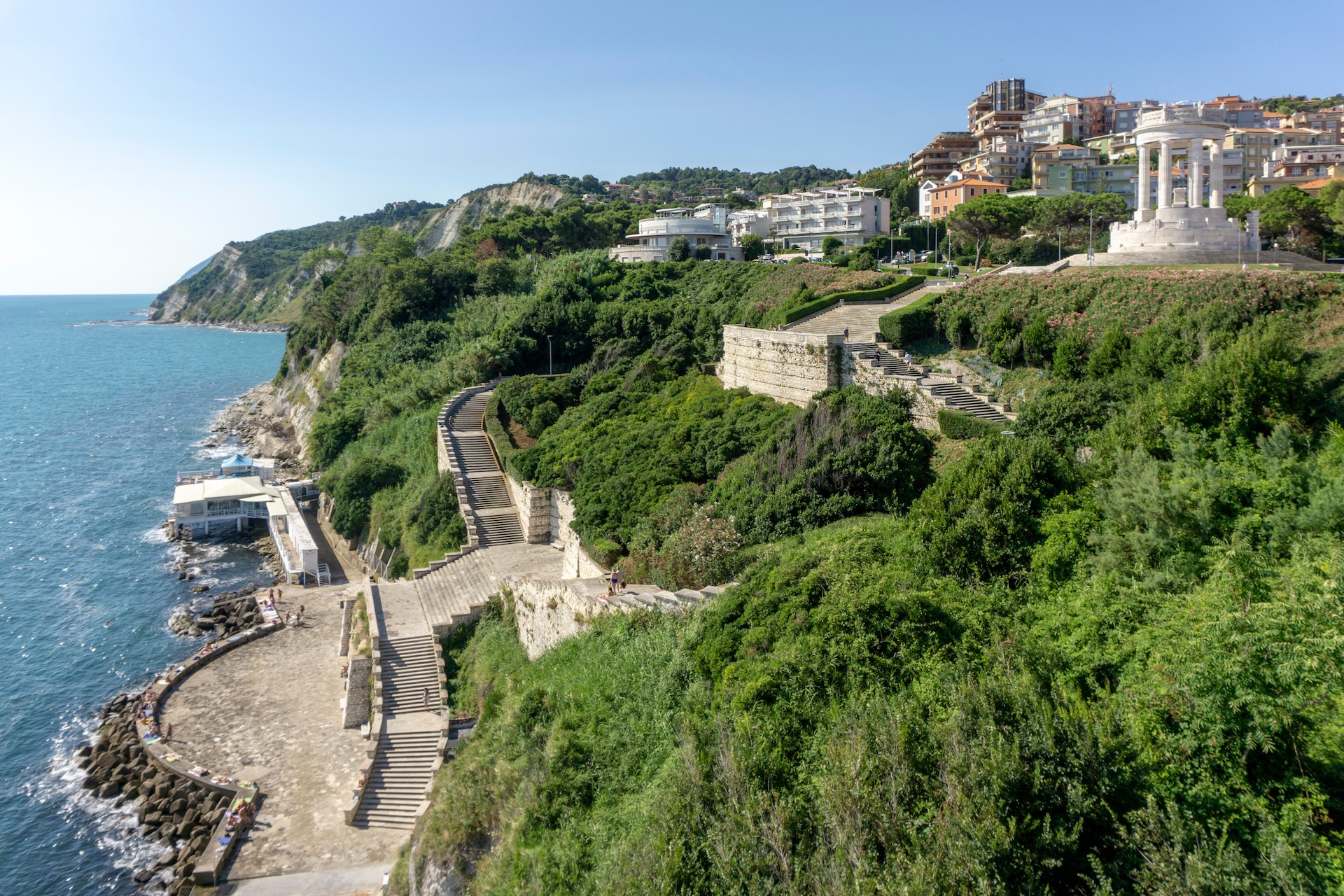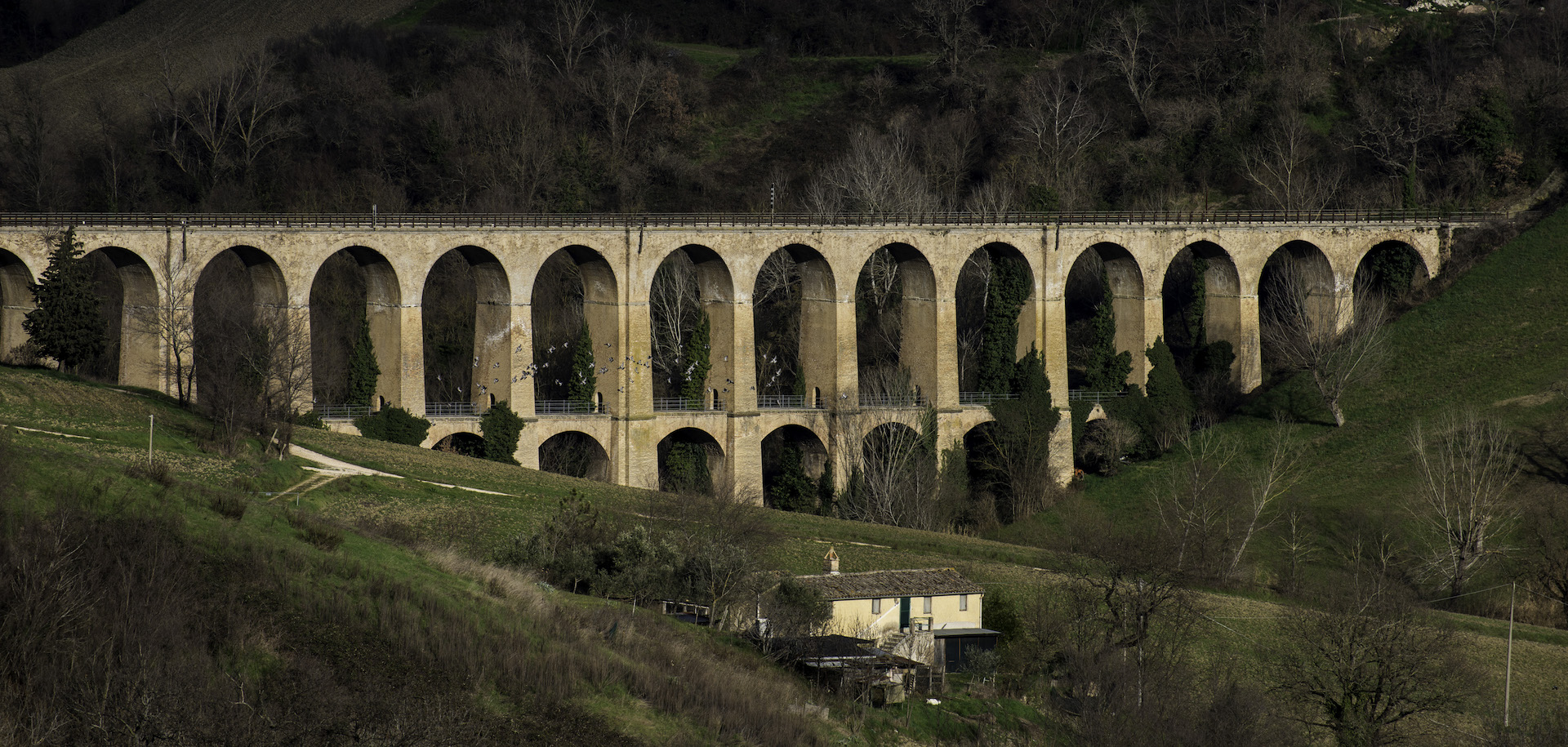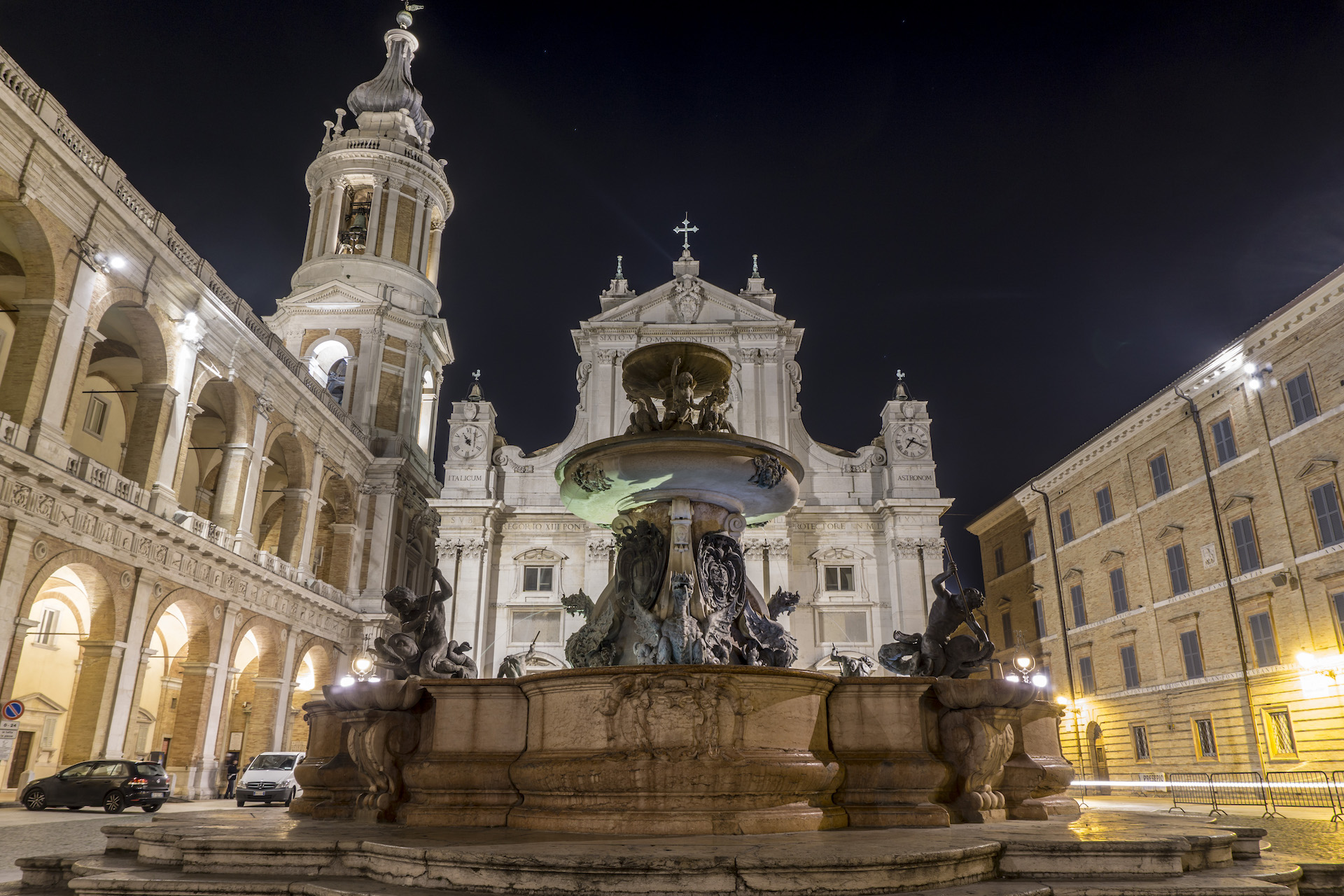Admirable architectural masterpieces
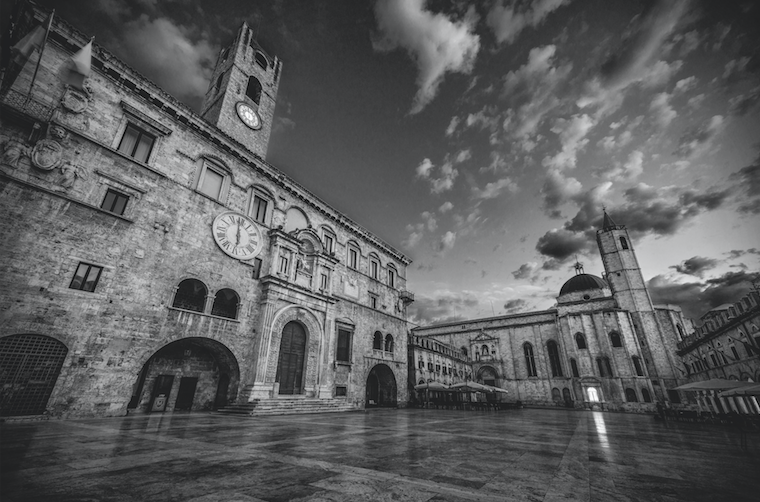
Fano
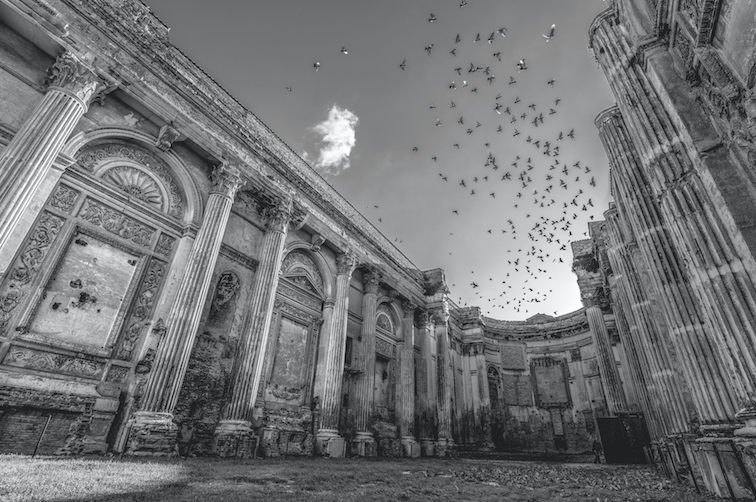
The Malatesta court. The building underwent several modifications. The stairway and the balcony, in particular, were rebuilt in 1544 by Giovanni Bosso. Worth of mention are also the Gothic double-arched windows on both the front and the rear of the court and the Borgia Cybo Arch, leading to XX September Square.
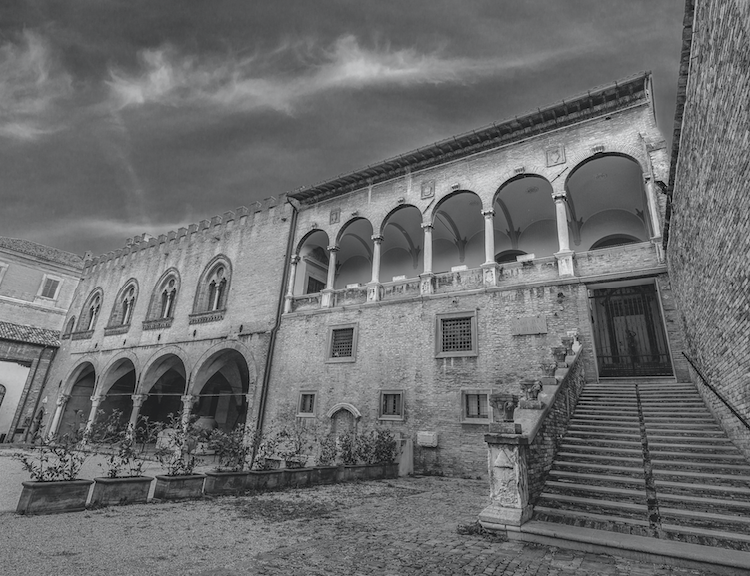
Ancient deconsecrated St. Francis’. Its construction begun in the mid 13th century. For a long time the church was one of the most beautiful ones in town. However, during the 20th century, after a radical transformation designed by architect Giuseppe Ferroni from Senigallia, its original aspect was replaced by a neoclassical style.
Ancona
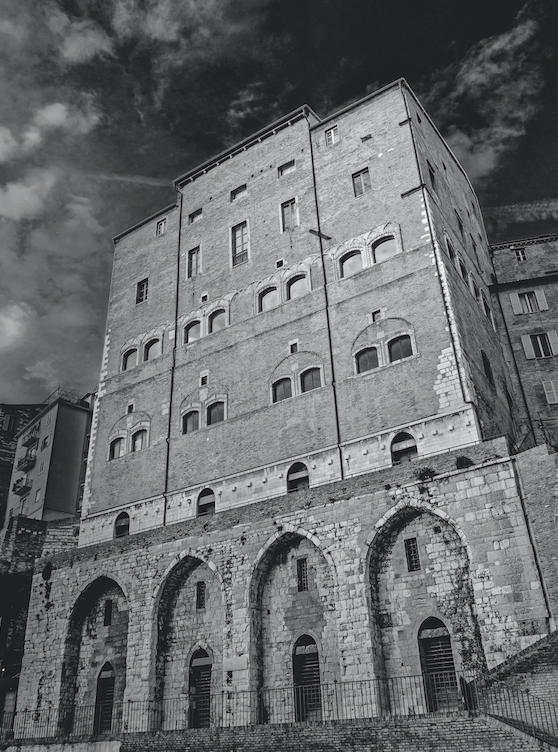
Palace of the Seniors, facade in front of the port. It is the city hall since the 13th century. This side keeps more evidences of its Romanic-Gothic style. Its seven brick storeys, with Romanic windows and little intersected arches, lay on a base made with white stone carved from mount Conero.
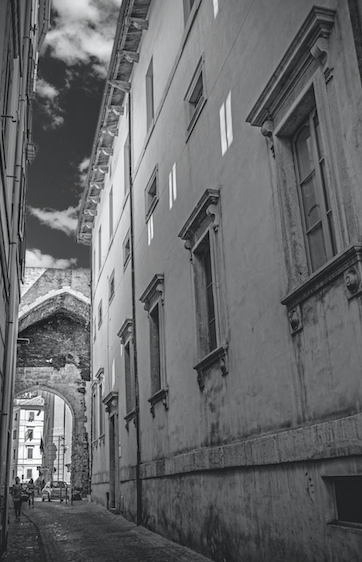
Mengoni Ferretti Palace: it became a town asset in 1949 and currently hosts the Benincasa Library. At its end, on the Bernabei street side, there is Porta San Pietro (St. Peter Gateway), dating back to 1221, built with great calcareous stone blocks which highlight its defensive characteristics. It is usually called “the Arch of Carola”.
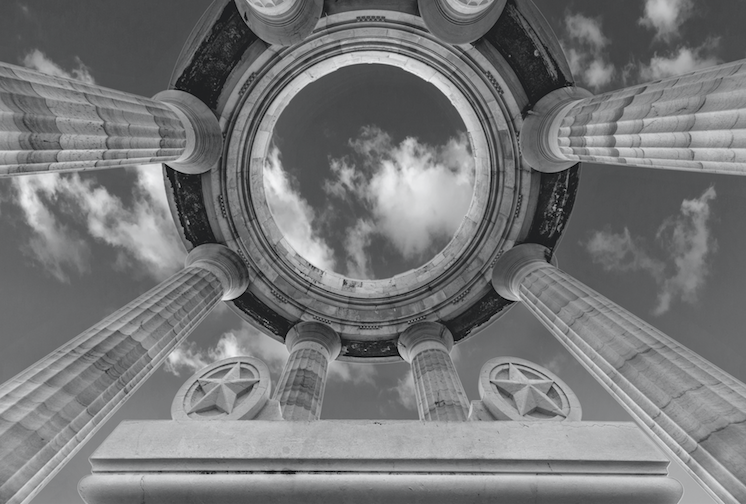
Monument to the Fallen: built with Istria stone on a design by Guido Cirilli, it consists of a circle of eight fluted columns and an altar at the centre. Inaugurated in 1930, during the fascist era, it was built as a homage to the Fallen in World War I
Osimo
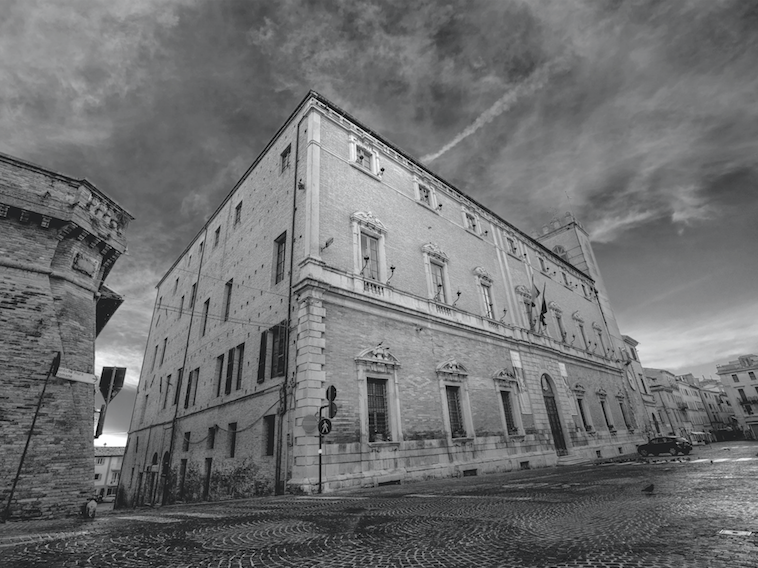
City hall: it is a majestic palace, built over the 16th and the 17th century, flanked on its east side by a 13th century civic tower. Its facade shows single-lancet windows, and cornices in the shape of little temples.
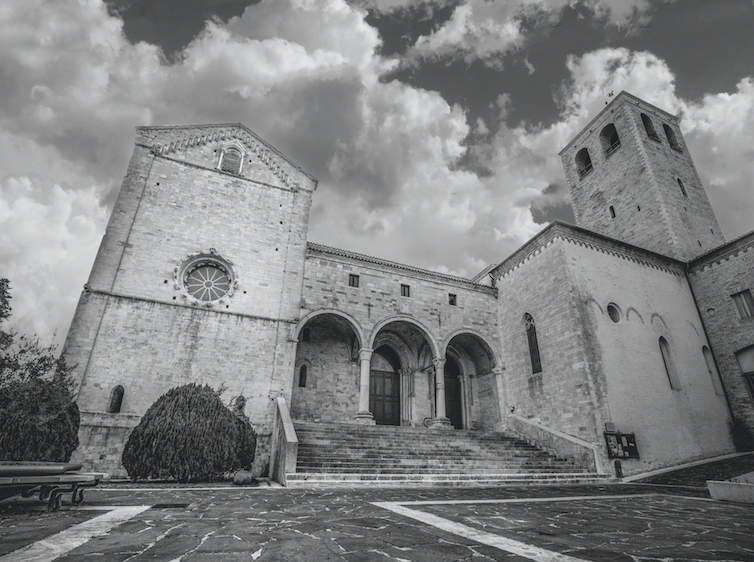
St. Leopardo Cathedral: Its original Romanic-Gothic design underwent several modifications. It is nowadays enriched with a great rose window on the façade, an exquisite stone portal and a staircase leading to three naves, as well as with many statues, including a Madonna with the Child and the Apostles on the left side.
Macerata
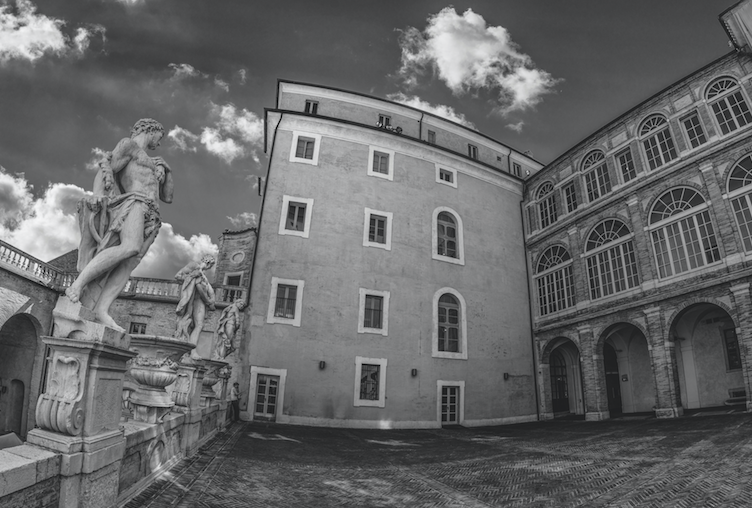
Buonaccorsi Palace: dating back to the 18th century, it is the fruit of the union of several pre-existing buildings. Its inside is enriched by a court and by an Italian garden; a peculiar characteristic of its is the access, whose floor is paved with little oak wood logs, meant to soften the noise of horse hoofs and carriage wheels when they got into the palace.
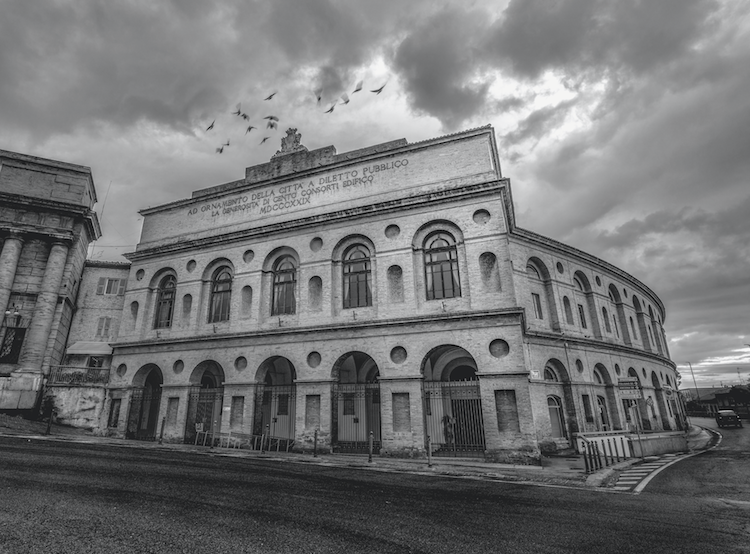
Sferisterio Arena: originally meant for sport events, as stated by the sign of the facade, it is nowadays one of the most suggestive open-air theatres in Italy. A brick wall, 18 meters high and 90 meters long, is faced by 56 Doric columns which separate the overlooking daises.
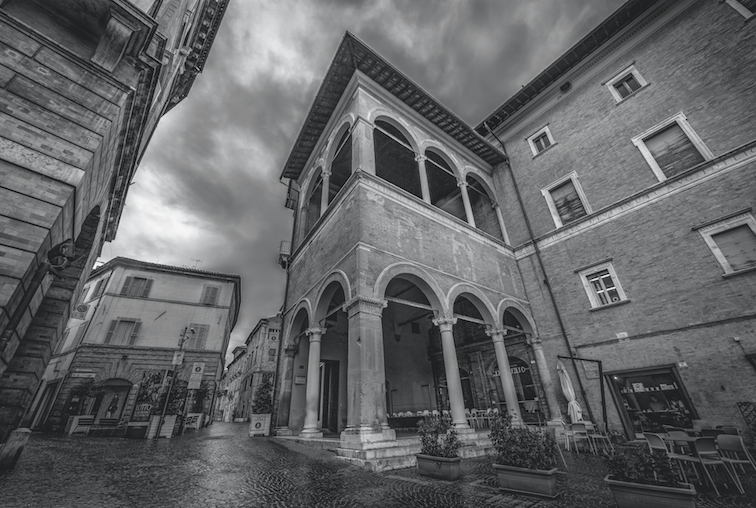
Loggia of the Merchants: it raises on the north-east corner of Piazza della Libertà (Liberty Square) and consists of a three-arched portico sustaining the above loggia, built between 1504 and 1505. The loggia was closed in 1641 by a papal governor, who unduly appropriated it to make it his bedroom. It was reopened as late as in 1905.
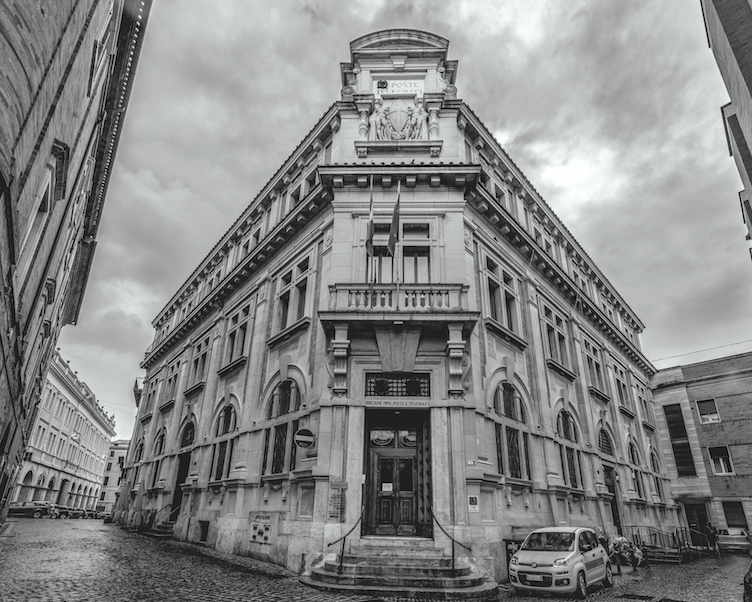
Post Office: it raises in an area previously occupied by St. Catherine’s, which in 1810 was closed by the Napoleonic government. Construction started in 1922 based on a project by architect Cesare Bazzani; the building was inaugurated in September 1930.
Fermo
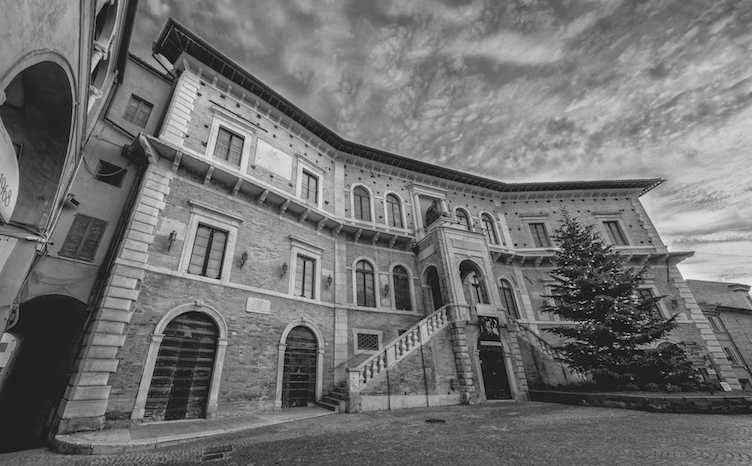
Palace of Priors: it was built in Piazza del Popolo (People’s Square) at the end of the 13th century to host the College of Priors. The fruit of the fusion of two buildings, a private aristocratic palace on the north side and St. Martin’s south, it was for a long time the seat of the city’s political life. Since 1981 it hosts the Civic Art Gallery, which includes the prestigious “World Map Hall”. It has been given its current outlook at the end of the 16th century, with a double access staircase and an overhead bronze statue of pope Sixtus V.
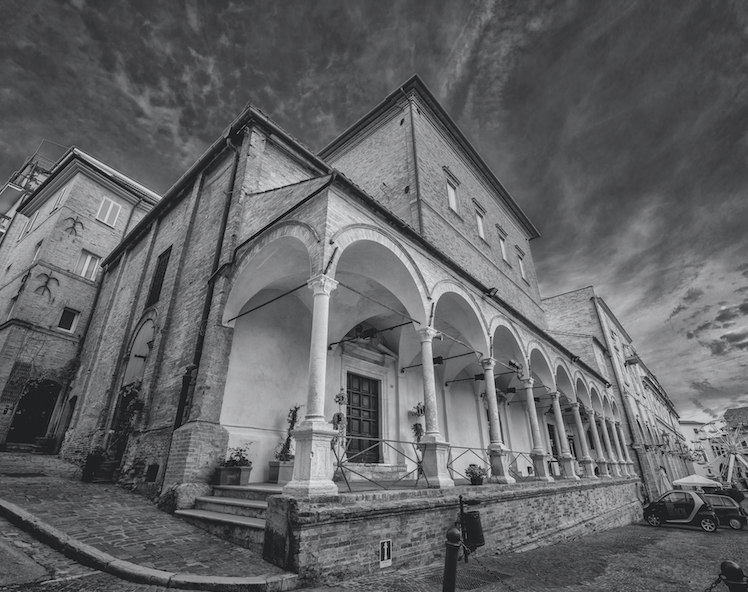
St. Rocco Loggia: built in 1528, it consists of nine arches sustained by columns, which guard what is left of St. Martin’s, a church built in 1505 as a religious reaction to a terrible plague which stormed Europe from 1400 to 1600. The loggia raises at a higher level than the west arcade; its architectural unity appears to have been acquired through multiple stages of constructions.
Offida
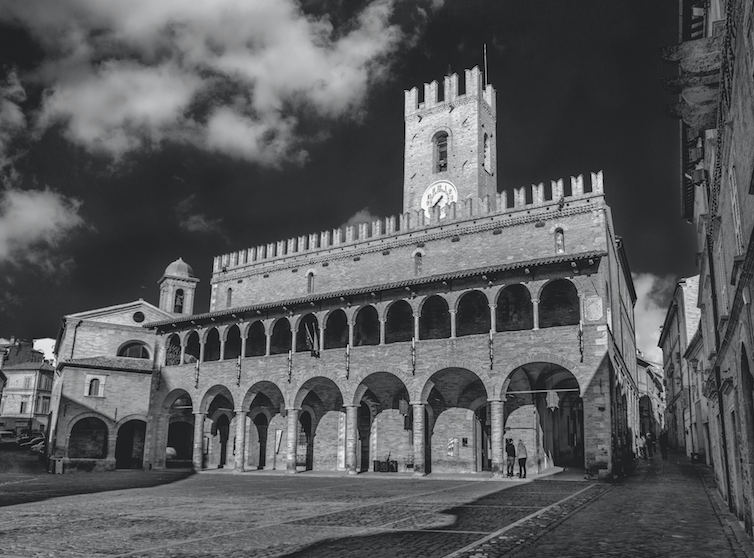
Town Hall: The building is placed in Piazza del Popolo (People’s Square); its design shows architectural characteristics from different periods. The majestic 14th century central tower is crowned with swallow-tailed merlons and adorned with a clock. On the façade raise travertine columns, sided by the coats of arms of the Offida Municipality and of the House of Savoy.
Ascoli Piceno
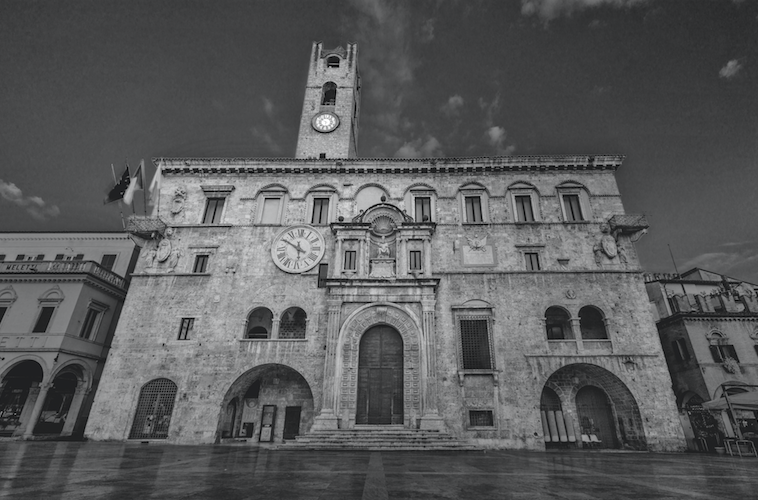
Palace of the Captains of People: rich with history and culture, it was built between the 13th and the 14th centuries by uniting three pre-existing buildings. The palace underwent an important restoration after a fire, lit in the Christmas night of 1535, when it was made a guerrilla field by a group of rebel nobles.

People’s Square: in a Renaissance style, and one of the most suggestive Italian squares, it has been defined “Salon of Italy”. Travertine slabs pave the square, which is surrounded by elegant buildings and is enriched with porticos and merlons.
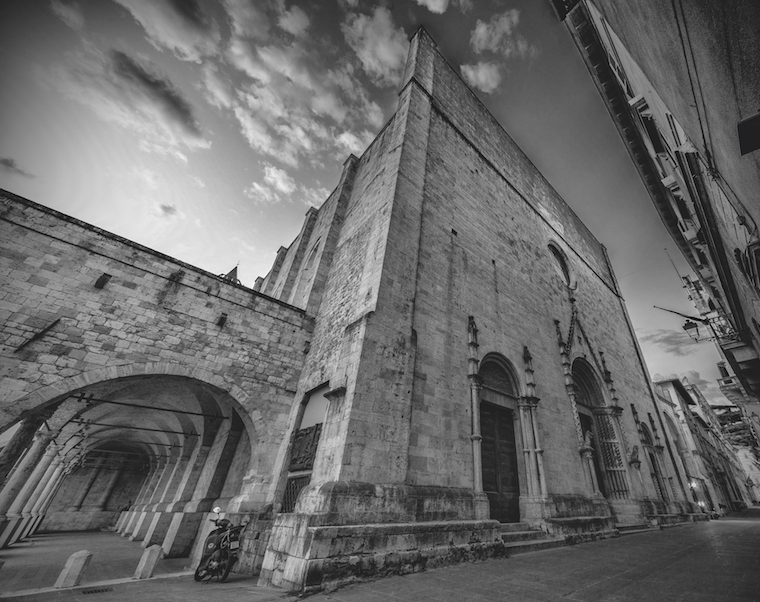
St. Francis’ church and cloister: the church is the casket of important works of art and shows both Romanic and Gothic aspects, having been built in an almost three centuries long time frame. It is a part of a monumental complex which includes the Main Cloister, between Trivio and d’Ancaria streets, and the Minor Cloister, that leans against the left wall of the church.
